Best Biryanis In India You Should Try - Top 10 Picks!

Did you know that each biryani has a delicious tale of its own in India, steeped in regional culture and traditions? It's fascinating how this beloved dish varies from one part of the country to another, each version holding the essence of its homeland. India is home to a staggering number of biryani lovers – millions, in fact, who celebrate this dish in countless ways. And guess what? With Cookd's Biryani Kits, you can make these awesome biryanis in your kitchen.
Let's start our yummy journey to discover India's top 10 biryanis and learn the stories they tell!
1. Hyderabadi Biryani - Layers of Flavour!
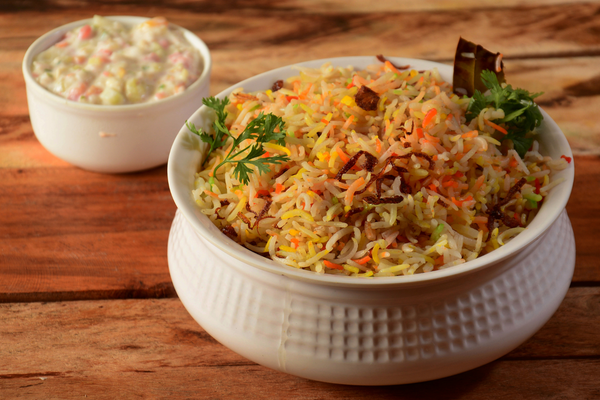
It originated in the kitchens of the Nizams of Hyderabad and is a masterpiece of fusion between Mughal and South Indian cuisines. It dates back to the era when the Mughals extended their rule to Southern India, blending royal Mughlai flavours with local spices and cooking techniques. It's a must-try dish as you will discover its rich culinary history and experience the outcome of the Dum cooking technique.
2. Thalassery Biryani - Kerala's Coastal Delight!
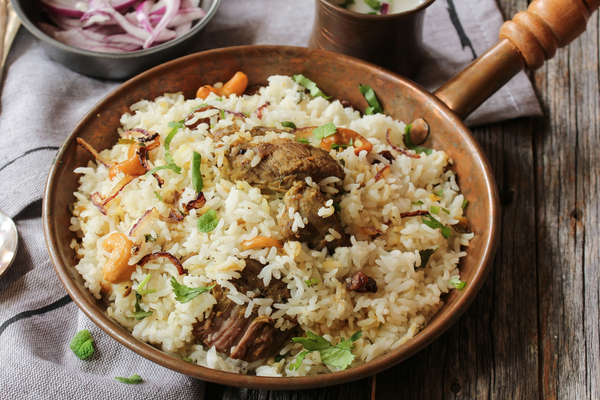
This biryani is a culinary tribute to the region's rich heritage and originates from Thalassery, a historic coastal town in Kerala renowned for its vibrant spice trade under British rule. It stands out with its use of unique short-grain rice, which perfectly complements the blend of local aromatic spices, making it a must-try dish. The ingredients, like succulent chicken or fresh, locally caught fish, are a great addition to this delicacy, making it a masterpiece. This biryani is a must-try for those seeking a one-of-a-kind taste experience.
3. Ambur Biryani - The Spicy Sensation of Tamil Nadu!
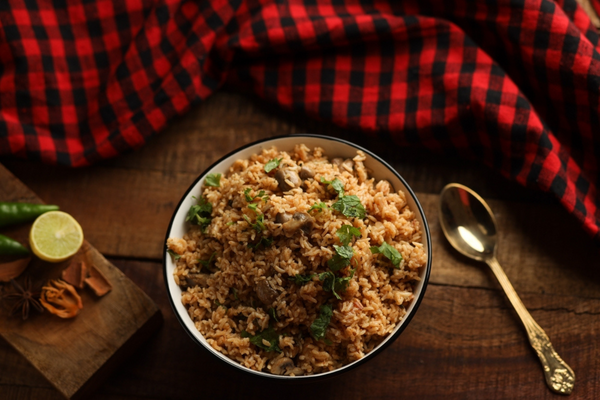
Originating from Tamil Nadu, this biryani was made famous by the cooks of the Arcot Nawabs. Hasin Baig, a royal cook, popularised it by passing on the recipe over generations and opening a shop in his hometown, Ambur. The distinct aroma of seeraga samba rice mixed with spicy gravy and tender meat gives the dish an irresistible taste, making it a must-try dish.
4. Sindhi Biryani - A Symphony of Spices!
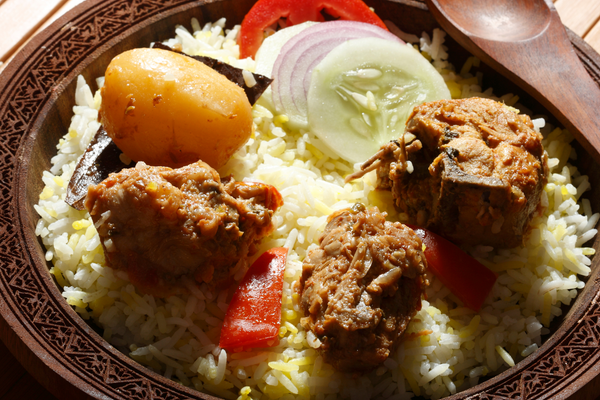
With roots in the Sindh region (now in Pakistan), Sindhi Biryani is a rich amalgamation of flavours from the diverse communities that inhabited the area, including Muslim, Sikh, and Hindu influences. This biryani represents the cultural melange of the ancient Indus Valley civilisation. It's a dish that truly reflects the vibrant spirit of Sindh. Try this biryani to savour a unique blend of spices and flavours that celebrate the rich cultural heritage of the Sindh region.
5. Awadhi Biryani - Lucknow's Royal Legacy!
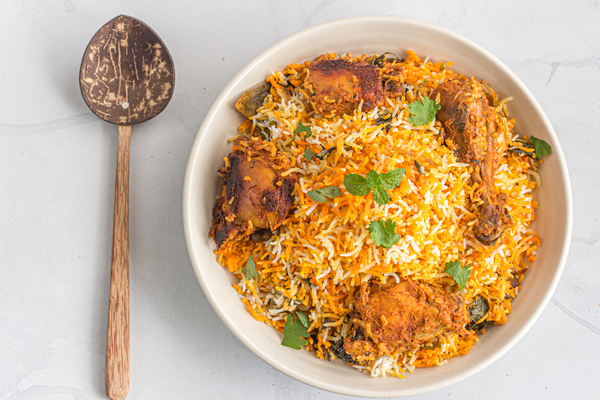
If you appreciate rich and subtle flavours, Awadhi Biryani is a culinary masterpiece you must try.
It originated in the kitchens of the Nawabs of Awadh and this biryani represents a blend of Mughal, Persian, and local cooking styles, reflecting the sophisticated culture of the Nawabi era. The Awadhi Dum Biryani is known for its subtle and delicate flavour, distinct from other biryani varieties in the Indian subcontinent.
6. Dindigul Biryani - Tamil Nadu's Delight!
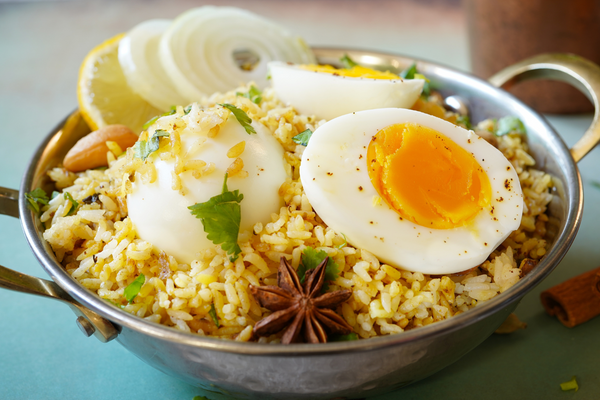
You should try Dindigul Biryani to experience a unique flavour that stands out in the world of biryanis. Dindigul Biryani originated from the efforts of a woman, the wife of Nagasamy Naidu, in Dindigul, Tamil Nadu. In 1975, Nagasamy Naidu began a business centred around his wife's biryani recipe, which uniquely used seerage samba rice. He initially opened a restaurant named Anandha Vilas. The name "Thalapakatti," often associated with Dindigul Biryani, comes from Nagasamy Naidu's characteristic turban (called 'Thalapa' in Tamil).
7. Kolkata Biryani - Bengal's unique Flavours!
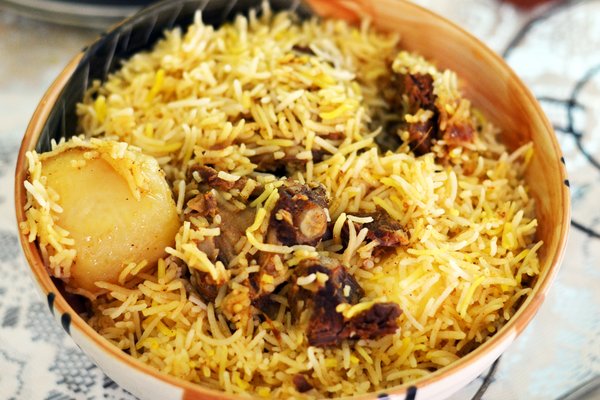
With its unique twist, Kolkata Biryani has its roots in the traditional Lucknowi Biryani. This adaptation began with the exile of Wajid Ali Shah, the last Nawab of Awadh, to Kolkata in the 1800s. During this time, the distinctive addition of potatoes to the biryani emerged as an innovative response to economic challenges, becoming a signature element that reflects an important era in Bengal's colonial history. Don't miss out on Kolkata Biryani – the unique twist of potato in it makes it a must-try for a truly different biryani experience!
8. Memoni Biryani - The Spicy Indulgence!
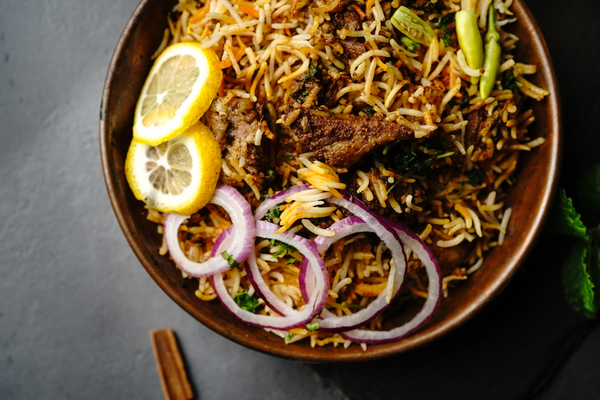
Memoni Biryani originated from the Memoni trading community of Sindh-Gujarat. It is derived from the Sindh Biryani of Pakistan and reflects the spicy-hot cooking style of the community! It is a must-try for anyone who loves biryani with an extra kick!
9. Chennai Bhai Biryani - The Local Favourite!

Chennai Bhai Biryani is much more than a dish; it celebrates Chennai's rich cultural mix. Infused with flavours from Arab, Persian, and Tamil cooking, it's a symbol of the city's vibrant history as a bustling port. Loved by the locals, this biryani brings Chennai's vibe to every table. For a taste of Chennai's vibrant culinary culture, give Chennai Bhai Biryani a try.
10. Dhonnai Biryani - The Traditional Finish!
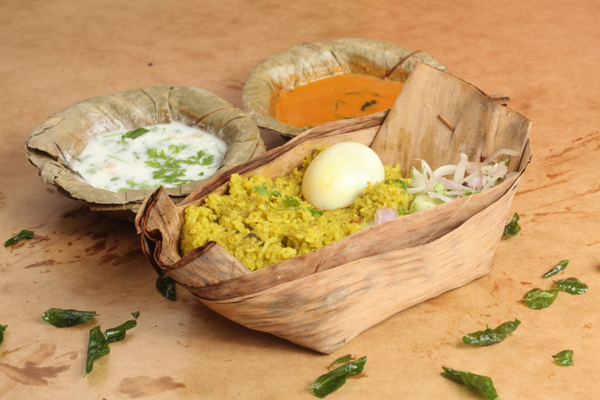
Donne Biryani, distinct from Karnataka, particularly Bengaluru, is celebrated for its eco-friendly serving style using dried leaves in the shape of a bowl, also known as 'donne'. Originating from South Indian culinary traditions, it harmoniously blends heat, tang, and aroma with local spices. Its rise from Bengaluru's streets to nationwide acclaim is a testament to its unique flavour and adherence to traditional preparation methods, embodying the culinary heritage of its region. Give Dhonnai Biryani a go for its awesome mix of spicy flavours and eco-friendly 'donne' bowls!
Discover the world of biryanis and find your favourite to recreate at home. For authentic recipes, visit Cookd and bring the flavours of India to your kitchen. Happy cooking, and enjoy the true essence of biryanis!
FAQs
1. What are the different types of biryani rice?
Biryani rice varieties include Basmati, with its slender and long grains; Seeraga Samba, known for its short but flavourful grains; and Jeerakasala, offering short grains with a subtle aroma.
2. What is unique in biryani?
Biryani's unique charm lies in its aromatic layers of spiced meat and rice, cooked with a special blend of spices unique to each region.
3. What is the difference between biryani and pilau?
Biryani is a layered dish with separately cooked rice and meat, whereas pilau is a single-pot dish where ingredients are cooked together.
4. What is the best side dish for biryani?
Raita, a yoghurt-based sauce, and salana, a spicy gravy, are the best side dishes to complement the rich flavours of biryani.





